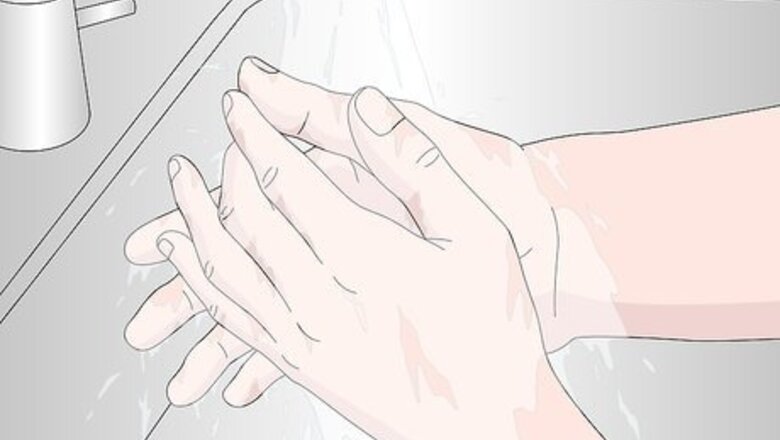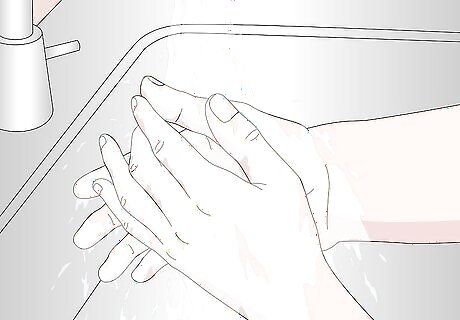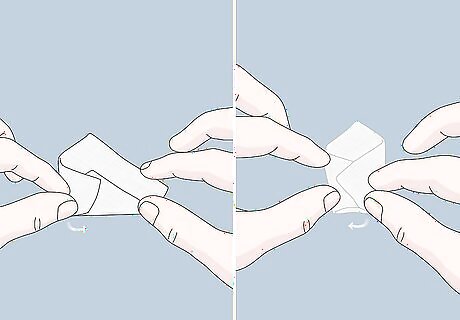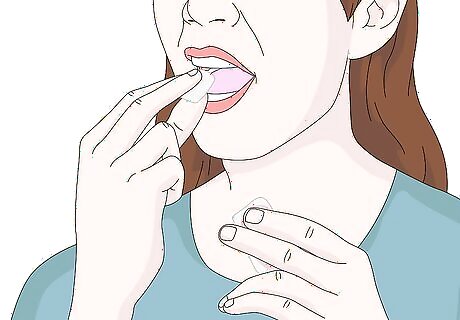
views
Folding a Gauze Pack

Wash your hands and sanitize your tools and working surface. Before handling the gauze, wipe down the space where you’re working with a disinfectant spray and wash your hands thoroughly. Sanitize your tweezers by washing them with antibacterial soap and dipping the tips in rubbing alcohol. If your gauze isn’t already separated into squares, you’ll need scissors to cut it. Sanitize your scissors, too, before using them.

Position a square of sterile gauze so one corner is pointing toward you. You can buy a package of gauze that is already cut into squares, or you can cut a square out from a larger sheet of gauze. If you cut your own, make it 2 by 2 inches (5.1 by 5.1 cm). You’ll most likely be folding a gauze pack for your mouth if you’ve had a tooth extraction. Plan ahead and pick up a pack of gauze from the drugstore before your procedure so you’ll have it when you need it.

Bring the bottom corner up 2/3 of the way to make a triangle. Take the end that is pointing toward you. Fold it up, being careful to keep it in line with the end that is pointing away from you. Crease the fold so it stays in place. Leaving the top 1/3 of the triangle open creates what will later be used to secure the gauze pack so it doesn’t come undone.

Fold the left and right edges in so they overlap in the middle. Fold the left edge slightly past the middle point in the gauze, and then fold the right edge over so it covers the left edge. This creates a rectangle with a pointed top. If the corner of the right edge is extending past the rectangle of gauze, simply fold it back onto itself so it’s in the main section.

Roll the gauze up from the bottom as neatly as possible. Keep the gauze’s folds in place as best as you can as you roll so it doesn’t come undone. Roll the gauze as tightly as possible to create a compact pack. The tighter the gauze is rolled, the more layers there are for the blood to soak into, which means you’ll have to change the gauze less often.

Flip the gauze over and peel the top layer back to encase the entire pack. After rolling up the gauze, flip it over and separate the top corner so there are distinct layers. Take the outermost layer and fold it back on itself around the whole pack. This seals the pack so it won’t unroll easily. Gauze is generally made of 3 distinct layers that can be separated. You may need to use your tweezers to get the outer layer apart from the other ones.

Tuck the end of the gauze into the center of the roll with the tweezers. Once you finish wrapping the outer layer of gauze around the pack, there will be a small tail of gauze left hanging out. Take your tweezers and poke them down into the center of the pack so it isn’t hanging loose. It should only take you a minute or so to fold gauze for your mouth, which makes it an easy task when you’re trying to recuperate from a tooth extraction. If you want to plan ahead, prepare 5-6 gauze packs before your procedure so they’re ready for you when you get home.
Recovering from a Tooth Extraction

Replace the gauze from surgery 1-2 hours after you get home. If your surgeon gives you different directions, make sure to follow them closely. In general, your mouth will bleed a lot after you’ve had a tooth extracted. Your surgeon will pack your mouth with gauze before you head home, but you’ll need to change the pack shortly after. Make sure to wash your hands before taking out the old gauze or putting a new pack in.

Continue changing soaked-through gauze until a blood clot forms. Check the gauze every 30-45 minutes and change it if it has bled through. While the gauze is in your mouth, bite down on it to help a blood clot form. If a clot doesn’t form after 4-5 hours and you’re still experiencing a lot of bleeding, call your doctor. The blood clot is super important to your healing process and helps ensure you won't develop a dry socket.

Rinse your mouth gently with salt water after each meal to prevent infection. Mix 1/4 teaspoon (1.5 grams) of salt with 1 cup (240 mL) of warm water. Gargle the salt water and then let it pour back out of your mouth into the sink. Avoid vigorously rinsing and swishing the salt water. Gently spit the water out so you don’t dislodge the blood clot. Your doctor may have also given you a syringe to spray water into the extraction site and clean it out. Follow any instructions they gave you for your specific situation.

Prevent dry sockets by not sucking or spitting. Any kind of strenuous activity could dislodge the blood clot and cause a dry socket, which is a very painful condition that requires a return trip to the doctor. Avoid these things during the first few days following your surgery: Drinking through a straw Spitting Smoking Eating foods that aren’t softDon’t Forget to Brush Your Teeth! You may think you should avoid brushing your teeth following surgery, but it can actually help prevent infections. Just be cautious around the removal site. For the first couple of days, avoid spitting out the toothpaste. Instead, let the toothpaste pour out of your mouth into the sink and then wipe your lips. This should help you prevent a dry socket.

Take the gauze out of your mouth before going to sleep. Don’t go to sleep if you still have gauze in your mouth. It could come dislodged, go down your throat, and choke you. If your mouth is still bleeding when it’s time for you to go to bed, set a timer for every 30 minutes. You can try to rest but avoid falling asleep. Every 30 minutes, check the bleeding and change out the gauze.




















Comments
0 comment